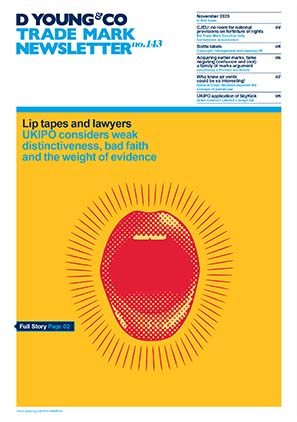Remote hearings in the UK courts – is this the virtual road ahead?
Over a few short weeks during March and April 2020, the English court system was forced to reform and modernise the way that court services are delivered, in particular by embracing the use of video technology. Up to that point, fully remote video hearings in the civil courts had only been piloted as part of a larger ongoing reform programme, but these hearings were largely procedural in nature, and likely did not deal with the nuances of court craft, such extensive legal argument and cross-examination. By moving the whole of the civil court system online in order to deal with the public health crisis, the court was able to demonstrate the inherent flexibility built into the system and proved it can be agile. Now with doors slowly opening again, there remains a question whether such hearings have a role to play in the future of the English court system: are remote hearings here to stay?
The road behind
Video technology is not new to the courts. Since the Access to Justice Act 1999, video conferencing has been permitted in some form in the civil courts and has had increasing levels of utility, in particular by hearing evidence of witnesses based abroad and reducing the costs associated with travel. A general reform programme has been in place for some time to test the efficiencies that modern technology offers, which included the possibility of remote hearings. By February 2020, several pilots had already taken place, including one that was set to start at the beginning of March in the County Court. Not surprisingly, none of the pilots anticipated fully remote hearings with judges also working from remote locations.
The Judiciary recognised in the early stages of the pandemic the importance of the role that video hearings had to play in the proper administration of justice. Resolute that the system shall not “grind to a halt”, on 17 March 2020 the Lord Chief Justice released a statement saying there was an urgent need to increase the use of video and telephone technology to hold remote hearings where possible. With the exception of jury trials in the criminal system, this largely was the case. Among other important measures taken, such as enacting emergency coronavirus legislation and implementing necessary changes to court procedural rules, HM Courts and Tribunal Service launched an unprecedented programme of expanding audio and video capability for judges and court staff, which enabled the conduct of fully remote hearings.
The programme was largely a success. During the summer of 2020, the Judiciary released a report to say that 85% of usual court business across the Business and Property Courts (in which the specialist intellectual property lists reside) had been undertaken and dealt with remotely using online video platforms. Sir Geoffrey Vos, the current Chancellor of the High Court who holds responsibility for the Business and Property Courts, went as far as to say that they had "a good war" and while not perfect, the remote hearing solutions on offer have generally delivered.
The remote experience
At the time of writing, with new lockdown measures recently announced by the UK Government, it seems likely that remote hearings will remain the default for the short term at least, despite some steps taken during the summer to reintroduce limited participation at court.
For those yet to experience a video hearing, the remote court appears nearly identical to a normal video conference, which is not surprising as popular platforms, such as Skype for Business and Zoom, have been used extensively. The participants log into the video hearing at the listed date and time using details provided by the judge’s clerk. On screen will be the judge and counsel and, in the background with cameras and microphones off, will be the parties, witnesses, various lawyers, court staff, and potentially also court reporters, transcript writers, other interested parties and the public, all from their respective homes. For added authenticity, the court has made clear that it expects the parties to respect the rules and customs of the physical courtroom, such as wearing business attire and not eating, drinking or making recordings of the proceedings. In that sense, it is business as usual.
However, despite the familiarity of video conferencing and court procedure, experienced litigators and parties alike may find the new and unfamiliar way of working a challenge. The technical constraints of video platforms are immediately apparent, particularly latency issues which inhibit the immediacy of free-flowing conversation and legal argument. There is a lack of visual cues from the other side to assess the reaction to a particularly poignant comment or point. The hearing happens at a noticeably slower pace, due in part to communication limitations, but also because document management becomes harder when navigating electronic documents. All efforts are made to avoid technical issues, but they remain common, particularly where one of the speakers has poor bandwidth or connectivity, which can lead to missed speech or, worse, someone is "kicked-out" completely. Put another way, a remote hearing has the same issues that could occur on any video conference call.
Not every issue can be foreseen, but good preparation can allay most concerns. The parties are actively encouraged to cooperate well before the hearing, and in doing so should identify any issues early and discuss with the court where necessary. Such issues might include known connectivity problems, issues with the suggested video platform or whether adjustments are necessary for accessibility. The location of a witness or member of the legal team, for example, may be of particular concern if broadband options are limited. The court will need to know if a witness moved to another location, such as a solicitors’ office.
The technical needs of each person attending the hearing should not be overlooked. Depending on the individual role, specific equipment may be desirable such as a second screen for viewing documents or a separate microphone to improve audio quality. Extensive testing of the system, ideally using the same platform as will be used for the hearing, will acclimatise users to microphone and camera functionality.
Private communication between legal advisors and the client, and between solicitors and barristers, during the hearing and recesses can be something of a challenge, as most video platforms do not have a means of providing users with confidential side-channels of communication. An additional "open line" should be considered, ideally using an encrypted messaging system, to ensure the legal team can effectively communicate with each other and the client can provide instructions seamlessly.
Document management remains as important as ever, but with the added complication of collating and navigating digital papers, or "eBundles". Comprehensive guidance is available from the court on preparing effective eBundles, although it is important to consider whether the individual judge has any preferences, or whether there is court-specific guidance. There are limited opportunities to make amendments to the eBundles once submitted, so careful planning is important. Parties should also consider building in additional time for document navigation during the hearing, particularly where nervous witnesses are involved, although good practice is to minimise jumping between documents during proceedings.
The road ahead
Remote hearings have been a good solution to a difficult problem, but they are far from perfect. The question for many court users now is how this modernisation will affect the court of the future. Should we ever go back to the way things were? As far as the Judiciary is concerned, the answer is a resounding no. In June 2020, Sir Geoffrey Vos said that it is vital the courts make long-term use of what has been learnt and devise a new way of delivering justice that is quicker, more cost-effective and allows greater access to justice. This supports the general view from the court that the dispute resolution process should not be a rigid one and the advantages of technology can and should be used to greater effect to increase flexibility and provide greater accessibility for all court users.
Depending on the type of hearing or trial, having a menu of options may be part of the answer. Looking at other reforms implemented in recent years, such as the Disclosure Pilot Scheme and the Shorter Trials Scheme, there is an appetite to build options into the litigation process to find efficiencies, increase usability and decrease cost. Although the default is likely to remain fully remote hearings for a time, even now in the Rolls Building, where the specialist IP courts sit, other options are potentially available if needed to suit the litigation. The menu includes fully remote hearings, partly remote hearings with the judge in the court building, hybrid hearings with some participants in court, and normal physical hearings (subject to social distancing requirements).
Although most practitioners would likely agree that some form of return to the way it was would be a very welcome development, the reasons to continue with remote hearings are overwhelmingly convincing. Remote hearings avoid the excessive and incidental costs of travelling long distances to gather in a court building, and in doing so reduce the carbon footprint. Not all hearings justify in-person hearings, particularly interim applications where no substantive issues are being considered. Ebundles reduce paper waste, as omnipresent rows of paper bundles typically found in courtrooms serve little or no purpose in a virtual setting.
Nevertheless, fully remote hearings will not be practicable or desirable in every case. In intellectual property matters, particularly designs matters, it is not unusual to have various products scattered around the courtroom as exhibits as an aid to the judge. The vagaries of a highly technical patent litigation with multiple expert witnesses may get lost in a video call. That being said, the last few months have proved that it is not impossible to have such trials, even in the Supreme Court.
In our experience, there is a need for further groundwork before fully remote hearings become an option under normal conditions. This may include further reforms to technology, procedure, rules and practice, to make it a more seamless experience. Technical issues are still rife and small practical issues remain a problem, such as the ability to hand up and share documents in a spontaneous way. There may be missed opportunities for legal teams to settle the matter or avoid a hearing "on the steps of the court" in the absence of readily available means for the parties to communicate confidentially before the judge joins the call. There are also of course segments of society who continue to struggle to access online services.
HM Courts and Tribunal Service, who manage the courts, continue to make technical improvements during the Covid-19 crisis, which in time might alleviate many of the technical concerns. An extensive roll-out of “CVP” (cloud video platform) for all the civil courts is underway with upgraded hardware, which is reportedly more stable and may make hybrid hearings more the norm in the long term, at least for interim applications and possibly other types of hearing if the judge deems it appropriate.
With all the investment behind the modernisation to date, and with the benefit of all the learning and experience of the past few months, what is certain is that some degree of remote future is inevitable. To the extent that it provides court users with a more efficient and cost-effective means of accessing court services, this is to be welcomed.

